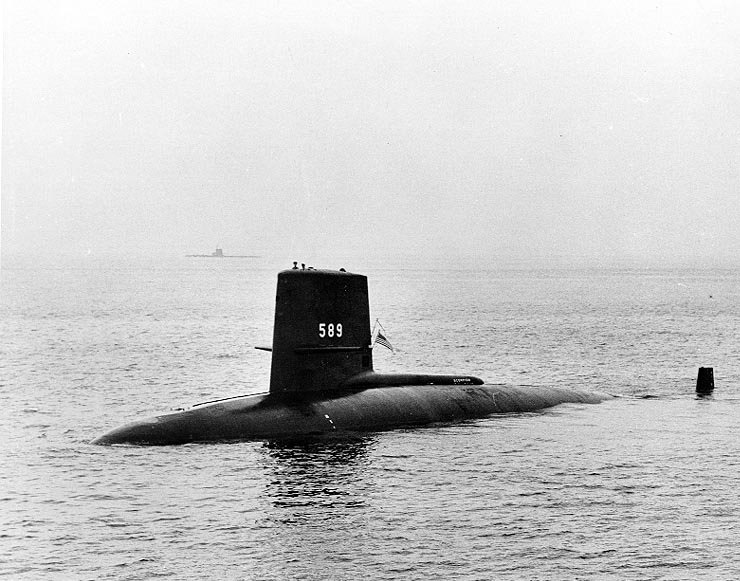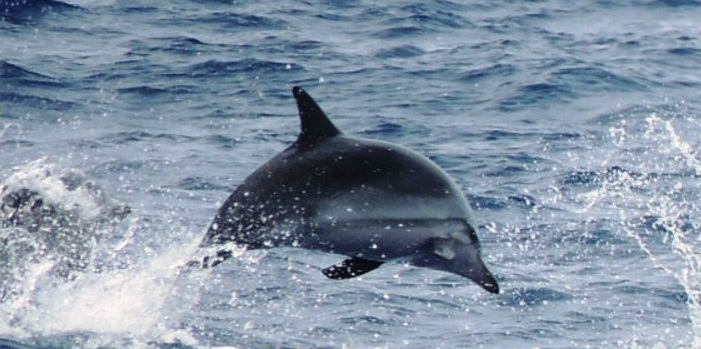In response to the January 23, 1968 North Korea seizure of the USS Pueblo and crew, the Johnson Administration sent an armada of ships and up to nine subs, both nuclear-powered and diesel/electric, into the Sea of Japan. The operation was known as “Formation Star,” the largest build-up of U.S. naval forces around the Korean peninsula since the Korean War. This U.S. naval show-of-force was led by the USS Enterprise, the world’s first nuclear-powered aircraft carrier and the largest warship in the world at the time.
Less known are the stories of the two submarines sent in response to the Pueblo Incident—the USS Segundo and USS Swordfish—both of which failed to execute their missions as planned. In the case of the Segundo, her detection by the North Koreans off the coast of Wonsan, North Korea nearly led to the deaths of the entire crew. And while not life-threatening, the failed Swordfish mission led to a cascade of Cold War events including, according to one author, the sinking of a U.S. sub in retaliation for the sinking of a Soviet sub, which the Russians had falsely attributed to ramming by the USS Swordfish.
In August 2000, decades after the resolution of the Pueblo crisis, a small California newspaper interviewed Russ Noragon, a member of the USS Segundo crew. In what a staff writer at the Ventura County Star described as a “top-secret mission that might be the stuff of a Tom Clancy spy novel,” Noragon described how his sub had to submerge to the bottom of the sea off the coast of Wonsan, North Korea to avoid capture by the North Koreans. At the time, Noragon was a Machinists Mate (MM); a Chief before retirement.
In an article titled “Local Submariner Recalls Time on Bottom,” Noragon told how he and the other 79 men on board had barely escaped with their lives when the Segundo and crew nearly ran out of air. The incident occurred on the day the Pueblo was hijacked in international waters off the coast of North Korea. Noragon said his sub was “ordered to attempt a rescue of the 83 sailors aboard the intelligence vessel USS Pueblo…,” the planning of which began immediately, he said. According to the Segundo’s Chief of the Boat (COB), there were five special ops on board, but their role was unknown to the crew.
But instead of completing their mission undetected, Noragon said North Korean sonar-equipped patrol boats discovered his sub at periscope depth shortly after it arrived in the area. They then began bombarding the Segundo with depth charges, forcing it to the sea bottom with its engines and most of its equipment shut down. After a couple of days on the ocean floor, “It was miserable,” Noragon said. “We all got terrible headaches from the lack of oxygen.”
Noragon, who was assigned to the engine room, said he didn’t even know the depth of the water, only the tenseness of the situation. Meanwhile, the crew covered everything on board with a “special powder” (presumably lithium hydroxide) that absorbed the carbon dioxide in the air that built up in the close quarters. Some fresh air was pumped in from the submarine’s reserve tanks, but only enough to keep the air breathable.
To avoid detection, Noragon said the crew, who “spoke in whispers,” were ordered to stay in their bunks when not on watch, in what submariners call “silent running.” The seriousness of the situation became all too apparent when classified materials and equipment were readied for destruction. Noragon said he really got nervous when the radiomen brought out all of the Segundo’s cryptography gear and the weighted bags and hammers. At which point, Noragon said to himself, “Oh, this is not good.” When the commanding officer of the Segundo, Cdr. David A. Fudge, realized that rescuing the Pueblo crew was no longer possible, Noragon said his crewmates devised an escape plan.
With North Korean vessels at the surface lying in wait, Fudge had the crew eject hollow can targets, alternating between the sub’s bow and stern. As each target pinged the North Korean sonar, the Segundo moved a little. “We had all these bubbles down there,” Noragon recalls. “Pretty soon, there were so many targets, they [the North Koreans] didn’t know which was real and which were a decoy.” This allowed the Segundo and crew to finally escape. Now fifty years later, the ill-effects of this failed mission remain with the surviving members of the crew.
About ten days after the Pueblo seizure, the USS Swordfish raced to the Sea of Japan from her homeport at Pearl Harbor. The sub’s belated departure might have been to compensate for the withdrawal of Segundo from the area, or perhaps it was sent to help confront the Soviets who by then had sent an armada of their own ships and subs to confront Operation “Formation Star.”
Unfortunately, in early March, Swordfish struck a block of ice that had drifted south, bending her mast back at a 45-degree angle; so she departed the area for the U.S. Naval Base at Yokosuka for repairs, which required ten days. However, when the Japanese press noticed the arrival of a damaged submarine on the surface—a rare event—they requested an explanation from the U.S. Navy. To avoid disclosing the Swordfish’s secret mission—all submarines on special operations were classified—the Navy said the Swordfish had come to Yokosuka for some much-needed R&R. But what about the damage? As the Navy explained, the “damage was likely caused by hyoryubutsu,” meaning flotsam or wreckage, not ice.
When a photo of the Swordfish with a bent mast appeared in an article in a Japanese newspaper, the Russians smelled a rat. About a week earlier, K-129, their nuclear-armed Project 629A (NATO reporting name Golf II) diesel-electric powered submarine, sank without explanation. Had the Swordfish intentionally rammed a Soviet submarine, resulting in the death of all 98 men on board? When the Russians confronted the Americans, the Pentagon would only say that the Swordfish was about 2,000 miles from where their Soviet submarine sank—no mention was made of Swordfish’s secret Pueblo mission. According to Ed Offley, the author of “Scorpion Down: Sunk by the Soviets, Buried by the Pentagon,” the Soviets intentionally sank a U.S. submarine, the USS Scorpion, in retaliation for the Swordfish’s sinking of their submarine about two months earlier. For the Silo, Bill Streifer.
Featured image- USS Scorpion.


 Major public opposition has been building against the planned dolphin exhibit at the Mississippi Aquarium in recent months. Over 15,000 In Defense of Animals supporters have written to Hewes and Meadows since the plans were revealed. A former dolphin trainer at Gulfport’s Marine Life Oceanarium has amassed almost 160,000 supporters for her petition calling on Mississippi Governor Bryant not to redirect $17 million of BP deepwater drilling disaster restoration funds to build the Aquarium.
Major public opposition has been building against the planned dolphin exhibit at the Mississippi Aquarium in recent months. Over 15,000 In Defense of Animals supporters have written to Hewes and Meadows since the plans were revealed. A former dolphin trainer at Gulfport’s Marine Life Oceanarium has amassed almost 160,000 supporters for her petition calling on Mississippi Governor Bryant not to redirect $17 million of BP deepwater drilling disaster restoration funds to build the Aquarium. While opposition to dolphin captivity grows in Mississippi, a sea-change is being felt across the country and around the world. SeaWorld ended orca breeding last year and announced that it is phasing out orca captivity in all three of its parks in Florida, Texas, and California. Last month, the Vancouver Aquarium was banned from keeping or breeding cetaceans, and now the
While opposition to dolphin captivity grows in Mississippi, a sea-change is being felt across the country and around the world. SeaWorld ended orca breeding last year and announced that it is phasing out orca captivity in all three of its parks in Florida, Texas, and California. Last month, the Vancouver Aquarium was banned from keeping or breeding cetaceans, and now the